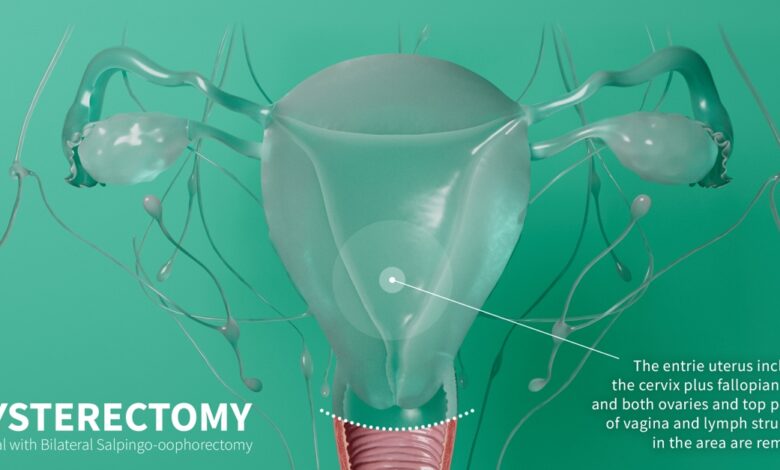Rhian Butlin Unnecessary Hysterectomy: A Candid Expert Breakdown

When the term Rhian Butlin unnecessary hysterectomy appears, it marks a deeply personal and medically tragic case. This article unpacks her journey—initial misdiagnosis, the emotional and physical aftermath of an unnecessary hysterectomy, and the broader implications for patient advocacy and medical care. Written in a casual yet expert tone, this piece cuts through complexity to deliver clarity, empathy, and insight.
The Story of Rhian Butlin Unnecessary Hysterectomy
Rhian Butlin Unnecessary Hysterectomy for a 32-year-old dental nurse and mother of two, found herself at a harrowing crossroads after being told she had ovarian cancer. In September 2024, she sought help for excruciating abdominal pain that was initially dismissed as PCOS.
Progressing quickly, imaging later detected a 25 cm tumor on one of her ovaries. In December, Butlin underwent a full hysterectomy—removing her uterus and ovaries—as well as removal of her appendix and a portion of her bowel lining, all based on accessory inflammation and suspicion of malignancy.
The surgery led to severe complications: fluid buildup, sepsis, and a medically induced coma. “We were told our little sister possibly wouldn’t make it through the night,” her sister said. After a difficult recovery and initial relief when biopsy results showed no cancer, the true diagnosis came to light: rare, aggressive appendix cancer that had already spread to the pelvis and lymph nodes—stage 4 and incurable.
Analyzing the Misdiagnosis and Its Consequences
Missteps in Diagnosis and Treatment
Rhian Butlin Unnecessary Hysterectomy case shows key diagnostic misjudgments. Despite the massive tumor and initial testing, no effort was made to biopsy or reassess before performing radical surgery. This ultimately led to an unnecessary hysterectomy, where she lost her reproductive organs without ovarian cancer being present.
Physical and Emotional Fallout
The physical consequences were extreme: infection, coma, and trauma from losing major organs. Equally grave were the emotional wounds. Butlin described being “emotionally drained,” struggling with fear and disrupted sleep. Her sister expressed feeling “massively let down” by the medical system.
Broader Implications
This incident highlights the crucial importance of thorough diagnostics, second opinions, and ethical restraint when recommending irreversible surgeries. It serves as a warning: unnecessary hysterectomies carry both irreversible physical consequences and deep emotional harm.
Medical Expert Perspective – What We Can Learn
Alternative Approaches That Were Overlooked
With vague abdominal symptoms, a tumor should prompt minimally invasive biopsy or laparoscopic evaluation—not full hysterectomy. Imaging alone can be misleading. Diagnostics must lead, not surgery.
The Role of Second Opinions
Before radical surgery, consultation with oncology, radiology, or surgical pathology could have prompted additional investigations or different treatment paths.
Ethical Lessons for Healthcare Providers
Informed consent is more than a procedural matter—it must include discussing uncertainty, alternative diagnoses, and the risks of irreversible procedures. Especially with uterus-removing surgeries, emotional, hormonal, and long-term effects must be front and center.
Resonating Quotes to Reflect the Impact
“It feels like we have been massively let down.” – Lindsey Rice, expressing the family’s disillusionment.
“I’ve had a full hysterectomy when I did not need to.” – Butlin, laying bare the emotional toll.
Related External Resources on Hysterectomy and Diagnostics
For those craving a deeper understanding, here are reputable external links:
- An overview of hysterectomy types and appropriateness of use.
- (Hindustan Times, context)
- Clinical review on indications and risks of hysterectomy, with global statistics.
Frequently Asked Questions (FAQs)
Q1: Was Rhian Butlin’s hysterectomy truly unnecessary?
Yes. The surgery was based on suspected ovarian cancer, but the tumor biopsy later proved negative. The cancer was found elsewhere, making the hysterectomy medically inappropriate in hindsight.
Q2: What complications did she endure?
She suffered from sepsis, fluid buildup, and required a medically induced coma during recovery.
Q3: What was the real cancer diagnosis?
She had an aggressive, rare appendix cancer that had spread—stage 4 and was incurable.
Q4: Could a second opinion have changed the outcome?
Potentially. A second opinion or biopsy before radical surgery may have led to a more targeted approach or early detection of the true cancer origin.
Q5: What lessons can patients learn?
Patients should request second opinions, inquire about less invasive diagnostics, and fully understand risks—especially when reproductive organs are at stake.
Final Thoughts – Blending Care, Caution, and Compassion
The Rhian Butlin unnecessary hysterectomy story invites profound reflection. Medical professionals must balance urgency with precision. Patients and families should feel empowered to ask, question, and advocate.
For Butlin, the emotional and physical harm was immense. Her case teaches us how critical diagnostics, empathy, and restraint are—especially when a life-altering procedure is on the table.